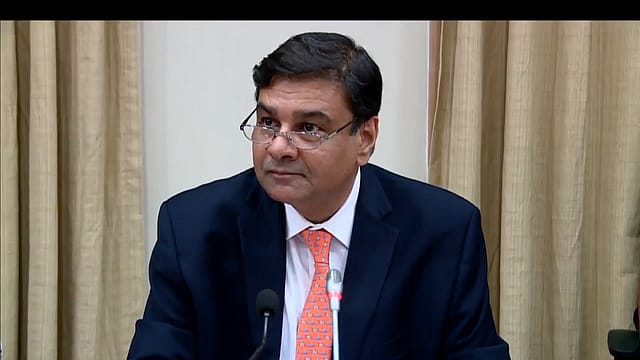RBI vs the government: A temporary truce
ADVERTISEMENT

“Central banks strive to build credibility through a series of difficult choices that reflect sacrificing short-term gains for long-term outcomes such as price or financial stability,” - Viral V Acharya, deputy governor, Reserve Bank of India.
The deputy governor’s A.D. Shroff Memorial Lecture in Mumbai last week sums up the contention between the country’s two important institutions – the government and the Reserve Bank of India (RBI). The two have different approaches to economic growth and in the past week the country has turned into a virtual war zone with both the central bank and the finance ministry warring over regulating payments, loan resolution mechanism, and public debt management. Things spiraled out of control as media reports suggested that RBI governor Urjit Patel has threatened to put in his papers.
To add fuel to the fire, a section of the media also reported that the government has plans to invoke Section 7 of the RBI Act 1934, which allows the government to issue directions to the central bank. The likelihood of such a move, which is unprecedented in the bank’s 83-year history, sent the stock market in a tizzy on Wednesday, losing some 260 points in the first few hours of trading and the rupee crashing to 74.14 to a dollar.
However, the finance ministry came out with a statement during the day, clarifying that “it nurtured and respected the autonomy of the central bank, within the RBI Act,” and that it is an essential and accepted governance requirement. The market recovered immediately, jumping some 500 points and closing in the black. The rupee climbed back to 73.93 versus the dollar.
January 2026
Netflix, which has been in India for a decade, has successfully struck a balance between high-class premium content and pricing that attracts a range of customers. Find out how the U.S. streaming giant evolved in India, plus an exclusive interview with CEO Ted Sarandos. Also read about the Best Investments for 2026, and how rising growth and easing inflation will come in handy for finance minister Nirmala Sitharaman as she prepares Budget 2026.
Tensions have been simmering between the two institutions since the government’s demonetisation drive, gathering more heat in recent weeks as the RBI felt that the government was whittling away at its legitimacy, powers and stature as an independent organisation.
One contentious issue is that of public debt management -- whether the RBI should be allowed to handle both monetary policy and the management of public debt. While the government was in favour of setting up a separate public debt management agency saying the same institution should not be setting the short-term interest rate and selling government bonds, the RBI disagrees.
The government believes that if the RBI tries to become an effective debt manager and sells government bonds at high prices, it would mean keeping interest rates low, which in turn can lead to inflationary bias in monetary policy decisions. But the RBI saw the government’s point of view as a usurpation of its power. The RBI maintains that it has never allowed the issue of public debt come in the way of monetary policy formulation.
The other area of conflict is the government’s desire to set up a new regulator for the country’s payment system. According to the draft Payment and Settlement System Bill, 2018, the government called for the “establishment of an independent payments regulatory board (PRB) to regulate the payments sector aimed at fostering competition, consumer protection, systemic stability and resilience in the payments sector.”
The RBI hit back in a dissent note saying that the PRB must remain within the central bank’s fold since currency in any form, digital or physical, has to be regulated by the central bank. Moreover, since settlement systems are finally posted in the books of account of banks so that the banks can make the final settlement, regulating these entities should go hand-in-hand with its settlement function.
But it was the handling of the Punjab National Bank in the aftermath of the Nirav Modi case that really set the cat among the pigeons. While the government blamed the RBI for failing to stop the rot in the country’s second largest public sector bank, the RBI retaliated by saying that it does not have the necessary powers to regulate public banks as effectively as private banks. The RBI had no control on things like selling of assets, replacement of management and board, license revocation, and resolution actions such as mergers or sales, with respect to public sector banks –– all of which it can and does deploy effectively in case of private banks.
Even the government’s call to the RBI to create liquidity in the system post the Infrastructure Leasing & Financial Services crisis, has gone unheeded. Similarly, the government’s push to force RBI to part with some of its ₹3.6 lakh crore surplus to bridge its fiscal deficit too has not materialised. For the central bank all these nudges from the government were further instances of attacks on their autonomy and efforts to weaken their balance sheet.
In a pre-election year with the government already rattled by soaring oil prices, a depreciating rupee, widening current account deficit and risk-averse market participants still trying to come out of the IL&FS fiasco, the last thing it wants is yet another stand-off with the central bank. It will not only hurt its image as a pro-business government, but also put the markets, the corporate sector and the country’s economy in grave danger.
